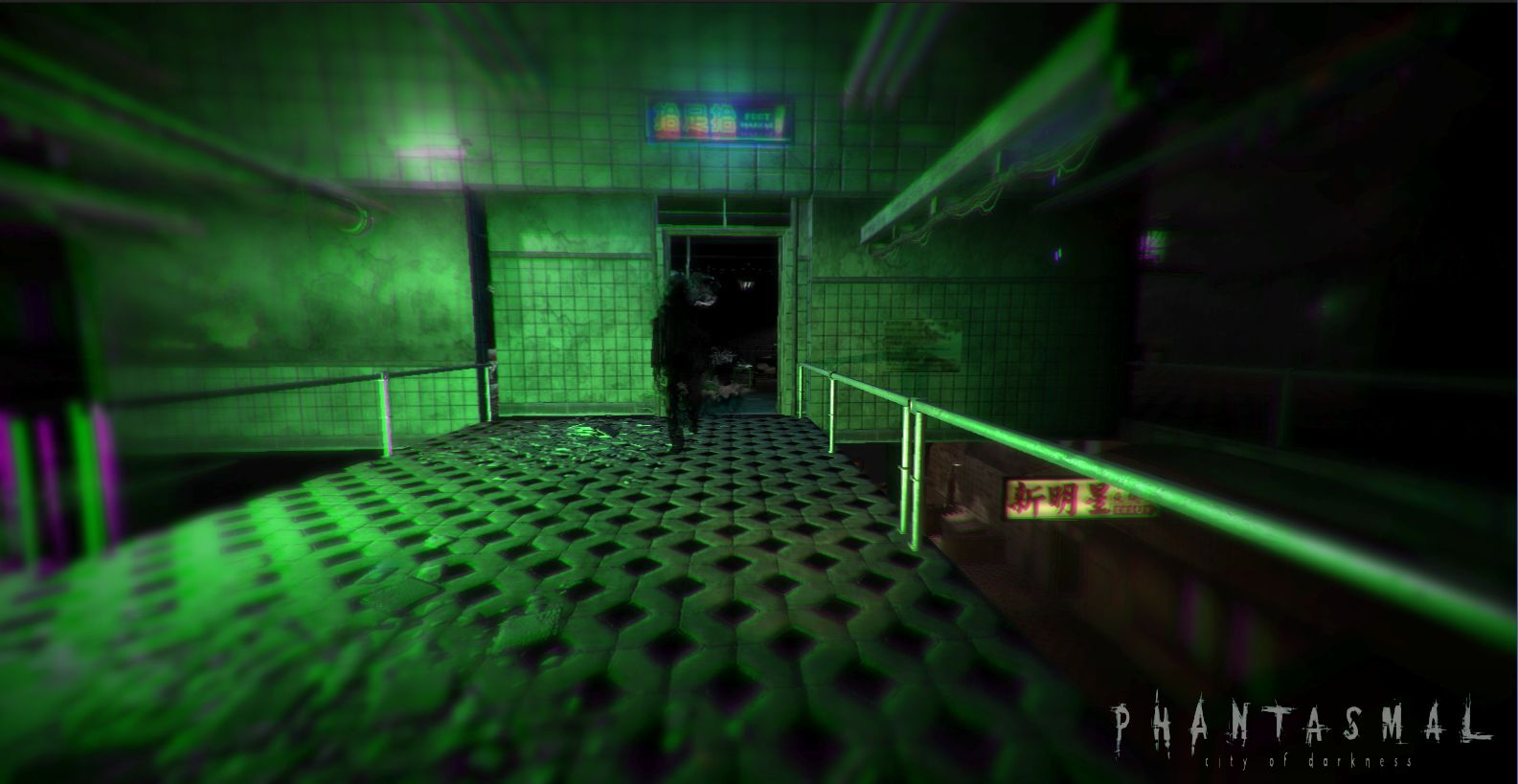The Evolving Landscape of Horror in Online Games: A Glimpse into 2025
Related Articles: The Evolving Landscape of Horror in Online Games: A Glimpse into 2025
Introduction
In this auspicious occasion, we are delighted to delve into the intriguing topic related to The Evolving Landscape of Horror in Online Games: A Glimpse into 2025. Let’s weave interesting information and offer fresh perspectives to the readers.
Table of Content
The Evolving Landscape of Horror in Online Games: A Glimpse into 2025

The realm of online gaming has always been a fertile ground for horror, offering a unique blend of interactivity, immersion, and shared experiences. As technology continues to evolve, the potential for truly terrifying online games in 2025 and beyond is immense. This exploration delves into the key trends shaping this burgeoning genre, highlighting the advancements that promise to redefine the boundaries of digital fear.
Technological Advancements Fueling Horror Innovation
Several key technological developments are poised to revolutionize online horror games in 2025:
-
Virtual Reality (VR) and Augmented Reality (AR): VR and AR technologies are blurring the lines between the real and virtual worlds, offering unparalleled levels of immersion. Horror games can leverage these technologies to create truly unsettling environments, blurring the boundaries between player and character, and heightening the sense of vulnerability and fear. Imagine walking through a haunted house in VR, feeling the cold air on your skin, hearing the whispers of unseen entities, and experiencing the visceral terror of being trapped in a nightmarish scenario.
-
Artificial Intelligence (AI): AI is playing a crucial role in enhancing the realism and unpredictability of online games. Advanced AI systems can generate complex, dynamic environments, create intelligent and responsive non-player characters (NPCs), and even learn player behavior to tailor the horror experience. This means that players will encounter truly terrifying enemies that adapt to their strategies, making each encounter unique and unpredictable. Imagine facing a terrifying monster that analyzes your movements, predicts your next move, and uses your own tactics against you.
-
Biometric Feedback and Sensory Integration: Biometric sensors, integrated into gaming hardware or mobile devices, can track physiological responses like heart rate, skin conductivity, and breathing patterns. These data points can be used to create personalized horror experiences, adjusting the intensity of the game based on the player’s emotional state. Imagine a game that reacts to your fear, escalating the horror elements as your heart races and your breathing quickens.
-
Cloud Gaming and Streaming: Cloud gaming platforms offer seamless access to high-quality gaming experiences across various devices, eliminating the need for expensive hardware. This accessibility allows for wider adoption of online horror games, fostering a larger and more diverse community of players. Imagine accessing a chilling horror game on your smartphone, joining a group of friends online, and experiencing the thrill of shared fear.
Emerging Themes and Genres in Online Horror
The evolution of online horror games is also driven by emerging themes and genres:
-
Psychological Horror: Games focusing on psychological horror delve into the depths of human fears, exploring themes of paranoia, isolation, and mental instability. These games often feature subtle horror elements, relying on atmosphere, sound design, and psychological manipulation to create a sense of dread and unease. Imagine navigating a labyrinthine asylum, questioning your sanity as you encounter disturbing visions and unsettling events.
-
Social Horror: Social horror games exploit the anxieties of social interaction and the power dynamics within online communities. They often feature themes of manipulation, betrayal, and the breakdown of trust, blurring the lines between game and reality. Imagine participating in an online community where you must navigate the treacherous waters of social interaction, trying to discern who you can trust and who poses a threat.
-
Immersive Storytelling: Online horror games are increasingly incorporating immersive storytelling techniques, allowing players to actively participate in the narrative. This can include branching storylines, interactive dialogue options, and choices that impact the game’s outcome. Imagine uncovering the secrets of a haunted town, making choices that affect the fate of its inhabitants and the course of the story.
-
Multiplayer Co-op and Competitive Horror: Multiplayer co-op games allow players to experience the horror together, fostering a sense of camaraderie and shared fear. Competitive horror games, on the other hand, pit players against each other in a battle for survival. Both genres offer unique opportunities for social interaction and dynamic gameplay. Imagine joining forces with friends to escape a haunted mansion, or competing against each other in a game of cat and mouse, where one player is the terrifying hunter and the others are the prey.
Benefits of Online Horror Games
Beyond entertainment, online horror games offer several benefits:
-
Emotional Catharsis: Horror games provide a safe space to confront and explore our fears, offering a sense of catharsis and emotional release.
-
Cognitive Stimulation: These games challenge players to think critically, solve puzzles, and make quick decisions under pressure, improving cognitive skills.
-
Social Interaction: Multiplayer horror games foster social interaction and collaboration, promoting teamwork and communication skills.
-
Escapism: Horror games offer an escape from the mundane, allowing players to immerse themselves in fantastical worlds and engage with thrilling narratives.
FAQs on Online Horror Games in 2025
-
Q: What are the potential risks associated with online horror games?
-
A: As with any form of media, online horror games can potentially trigger anxiety, nightmares, and emotional distress in some individuals. It is crucial to be aware of one’s own sensitivities and to avoid playing these games if they are likely to cause harm.
-
Q: How can parents and educators ensure the safety of young players?
-
A: Open communication, age-appropriate game selection, and setting appropriate time limits are essential for ensuring the safety of young players. Parents and educators should also be aware of the content and potential risks associated with specific games.
-
Q: What are the ethical considerations surrounding the use of biometric data in horror games?
-
A: The use of biometric data raises ethical concerns about privacy and consent. Developers must ensure that data is collected and used responsibly, with clear transparency and user consent.
-
Q: How can online horror games contribute to a more inclusive gaming community?
-
A: Developers can create games that are accessible and inclusive to players of all backgrounds and abilities. This includes addressing issues of representation, diversity, and accessibility in game design and content.
Tips for Creating Engaging Online Horror Games
-
Focus on Atmosphere and Immersion: Create a believable and unsettling atmosphere through sound design, lighting, and environmental details.
-
Develop Compelling Characters and Storylines: Characters should be relatable and engaging, with a compelling narrative that draws players in.
-
Utilize Psychological Horror Techniques: Emphasize psychological manipulation, paranoia, and the breakdown of sanity to create a truly chilling experience.
-
Prioritize Player Agency and Choice: Give players meaningful choices that impact the narrative and gameplay.
-
Embrace Technological Advancements: Leverage VR, AR, AI, and other technologies to enhance immersion and create innovative horror experiences.
Conclusion
The future of online horror games is bright, with technological advancements and evolving themes promising to redefine the boundaries of digital fear. As VR and AR technologies become more sophisticated, and AI systems become increasingly intelligent, the line between reality and virtual horror will continue to blur. The immersive storytelling, psychological manipulation, and shared experiences offered by online horror games will continue to captivate players, offering a unique blend of entertainment, emotional catharsis, and cognitive stimulation. By embracing innovation, prioritizing player agency, and addressing ethical concerns, developers can create truly terrifying and engaging online horror games that push the boundaries of the genre and redefine the landscape of digital fear.




![[UDK] Medieval Horror Environment - polycount Game Environment, Environment Design, Gothic](https://i.pinimg.com/originals/de/a0/dc/dea0dcdc29b0ccb0e323ffaef8a6394d.jpg)



Closure
Thus, we hope this article has provided valuable insights into The Evolving Landscape of Horror in Online Games: A Glimpse into 2025. We hope you find this article informative and beneficial. See you in our next article!